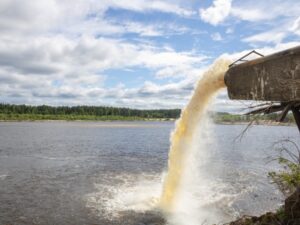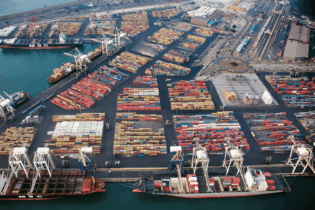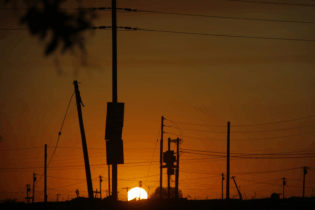- Nearly a quarter (23%) of municipalities were ranked ‘critical risk’.
- 56% wastewater treatment works not functioning properly.
- 60% of systems did not comply with microbiological standards, and 77% flunked the chemical treatment requirements.
Centralised vs decentralised solutions
A centralised solution is a large-scale water treatment plant servicing surrounding areas. These plants have the capacity to process enormous volumes of water, while the transport of water to and from the facility occurs via an expansive distribution network.
The main advantage of centralised systems is the efficiencies gained through economies of scale. They are commonly used in developed nations all over the world, and in South Africa for municipal water supply.
However, there are several disadvantages of this type of system, including:
– Complex and costly distribution network.
– Requires large capital investments for facility upgrades.
– High operating and servicing costs.
– Needs highly-skilled technical expertise to manage.
– Difficult to measure and record upstream and downstream water quality because of the vast piping system.
Decentralised approach
A decentralised approach involves smaller-scale water treatment solutions that are applied directly to individual facilities or communities. They typically consist of modular units or packaged plants that are mobile.
For example, at Capricorn College in Limpopo, a plant we designed and installed treats borehole water to be used as drinking water by the community of over 1000 people. The equipment is also used for chemical engineering students to learn how to operate the plant.
“Decentralised solutions can help solve current water challenges in South Africa by providing a relatively quick, cost-effective, targeted solution delivered on-site.”
Small footprint, big impact
Mauritius recently turned to a decentralised solution to produce clean drinking water. Although the island has access to seawater, desalination plants are costly. Luckily, the island also has abundant rainfall, and 11 self-contained units that treat captured rainwater to drinking water standards, currently supply 260 000 residents. New property developments in Mauritius must include their own water supply. Watericon recently installed a decentralised plant that will be scaled to produce 45m3/h of treated water to service 5000 – 10000 people in a residential development. We predict South Africa will soon be going this route, where any new buildings or resorts will need to generate their own power and water supply. Mines in far-flung places are also regular users of decentralised solutions. At one such mine in the DRC, the camp and surrounding community had no option but to drink polluted water from the river, causing people to fall ill. Just two twenty-foot containers purified this water, supplying drinking water to over fifty thousand people. At another mine in South Africa, we built two twenty-foot containers to treat sewage water to produce effluent in line with local legislations. The effluent is currently being used for irrigation by nearby farms.
Reduce, reuse, recycle
Companies can turn to decentralised solutions to reuse and recycle water. A local automotive plant was able to save around 21 million litres of water a year by treating their effluent to be reused in the system. This made them less reliant on municipal water for processes like rinsing paint, while minimising their environmental footprint. With any water treatment plant, it’s vital to understand upfront what the water balance is. How much water is coming in, and how much waste will be generated. The goal is to reuse and recycle as much as possible. This means understanding the regulations, and what is stated on the company’s water use license.The importance of operations and maintenance
Similarly to servicing a vehicle, a water treatment plant needs to be maintained to increase its lifespan and make sure it functions optimally and safely. This is where many South African municipalities are falling short, often using a run-to-failure approach. When running a water treatment plant, it’s important to know upfront who is going to maintain the plant. Does there need to be a laboratory and full-time staff on site for monitoring water quality?
When you can measure, you can manage
Often, water testing isn’t done regularly enough, or samples are not being sent to accredited labs. It’s essential to test water quality entering homes on a frequent basis to ensure that it has not been contaminated by septic tanks or other sources of disease via leaking pipes. But the vast piping network of centralised solutions makes regular testing a costly and complex task. Preventative maintenance involves consistent monitoring and servicing on a weekly or monthly basis. It does not need advanced expertise, just competent technicians who are trained to measure indicators and test water. With innovations in technology there is also the option to monitor plants remotely. Predictive maintenance can be used for more advanced systems. It is more costly initially, and requires a higher level of skills, but timely and informed monitoring can prevent breakdowns. Each asset in the system should be barcoded and entered into a reporting system like Sage, or even an Excel spreadsheet. It is possible to track a small bolt from its purchase to end-life. By following trends and patterns in the data, it’s possible to spot where and when a breakdown is likely to occur.When running a water treatment plant it’s important to ask the following questions:
- Who is going to maintain the plant?
- Does this need to be outsourced?
- Is a safety officer required?
- Does there need to be full-time staff on site?
- Is it necessary to have a laboratory on site for monitoring?










